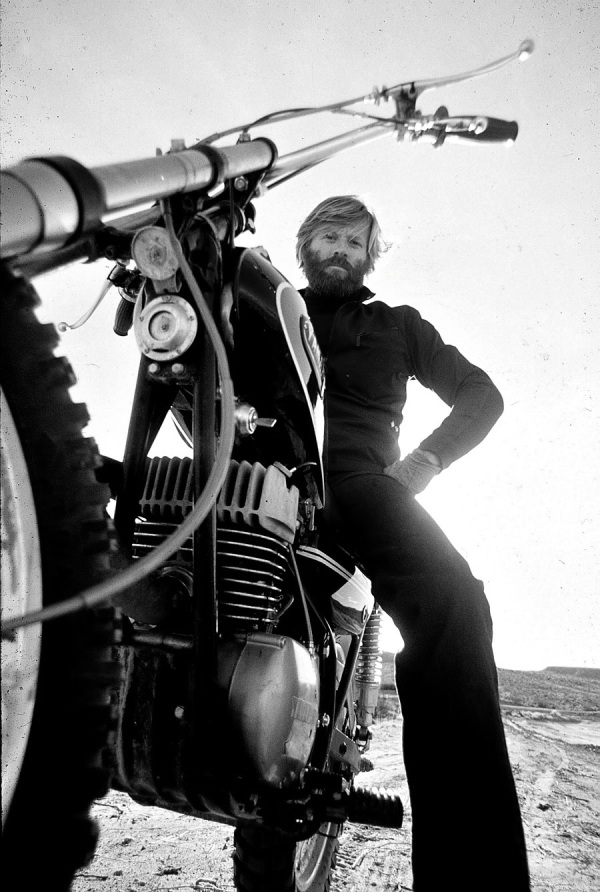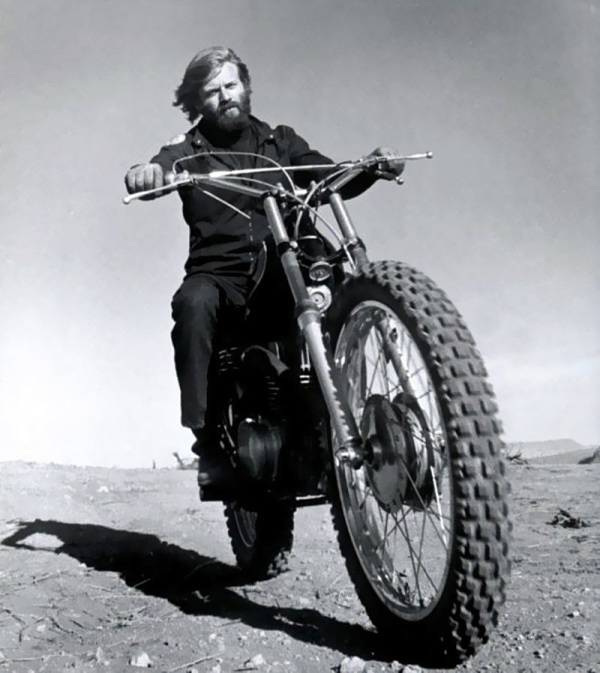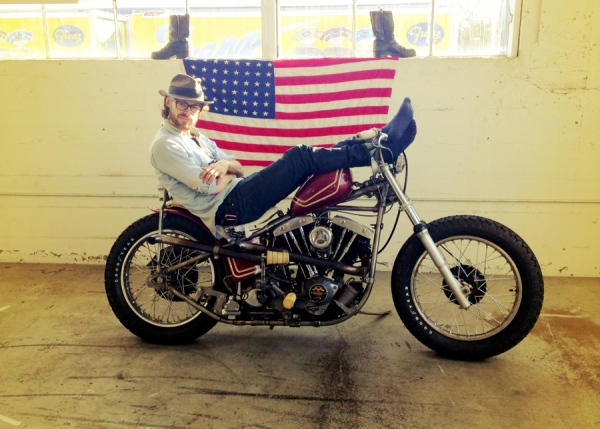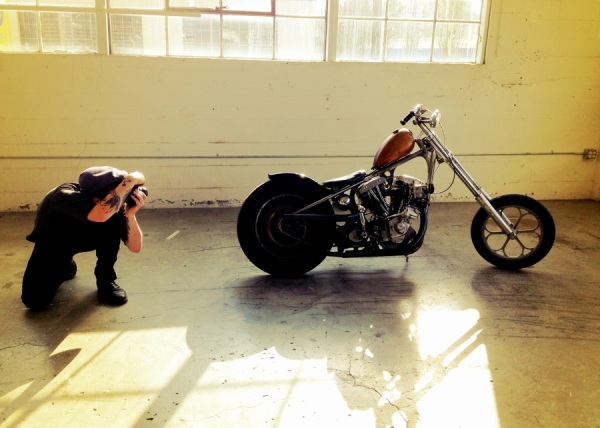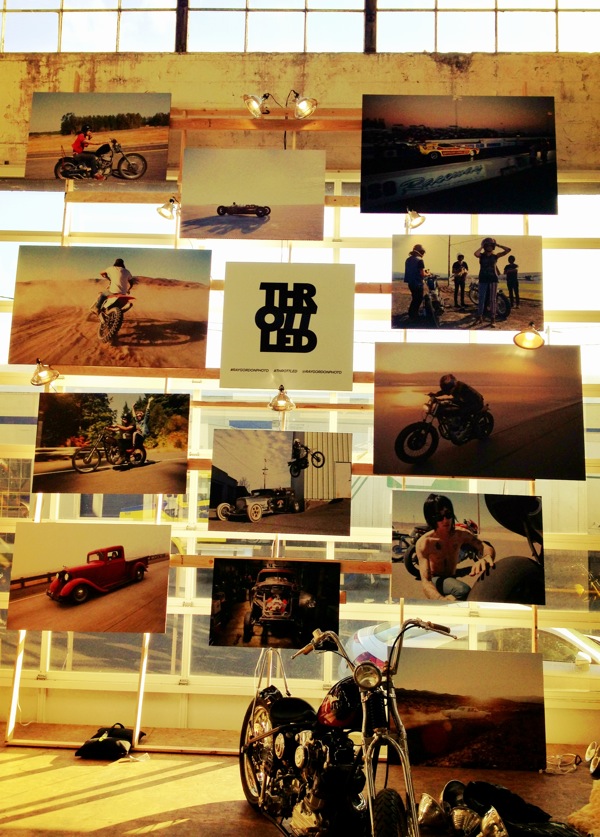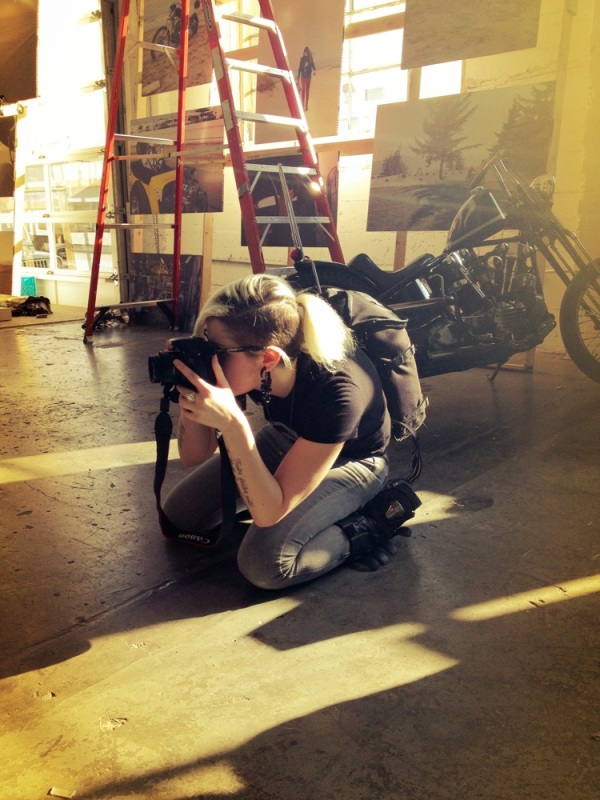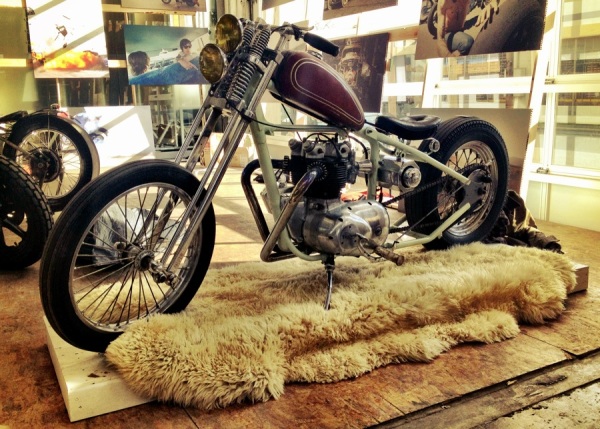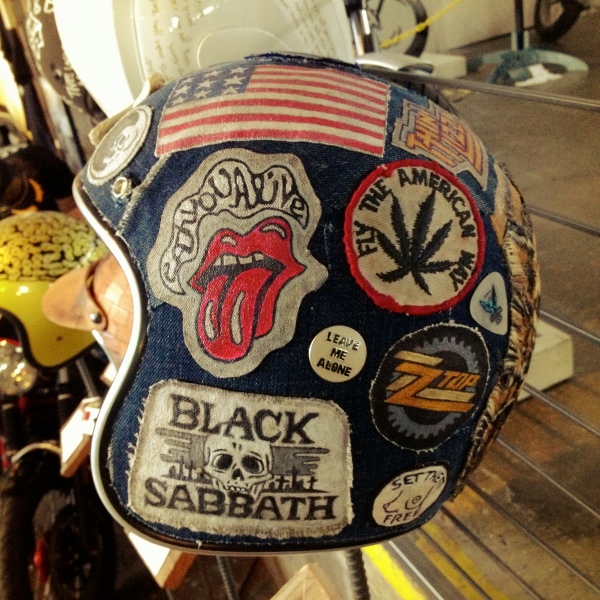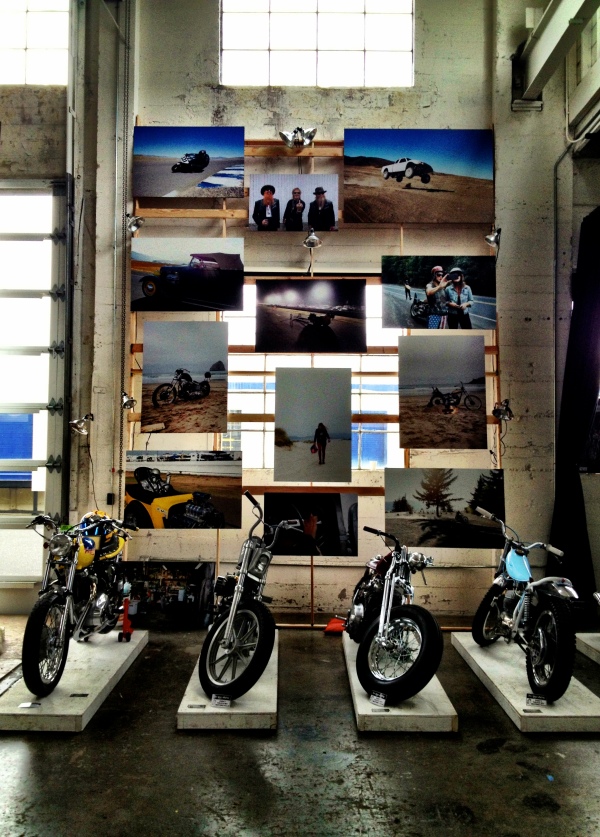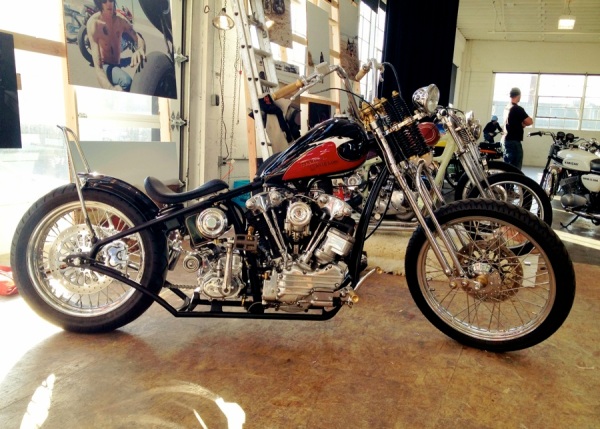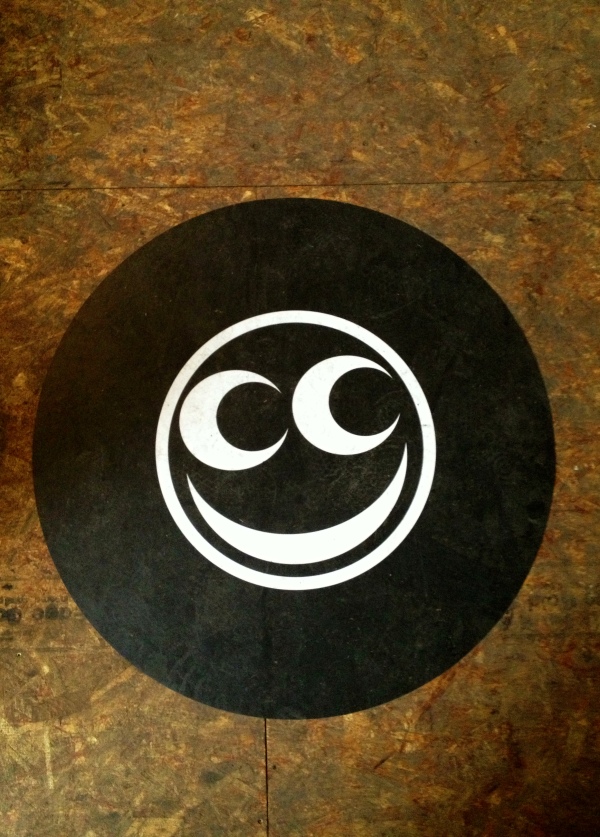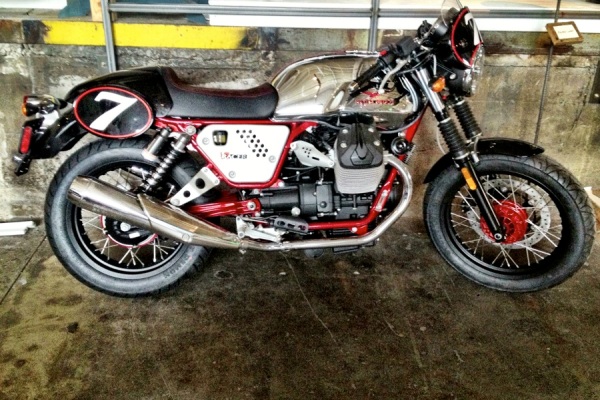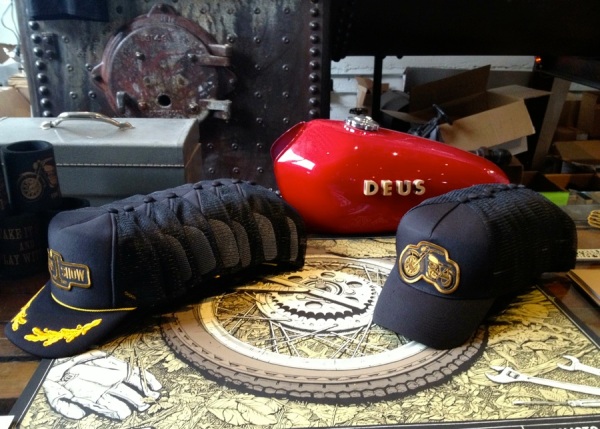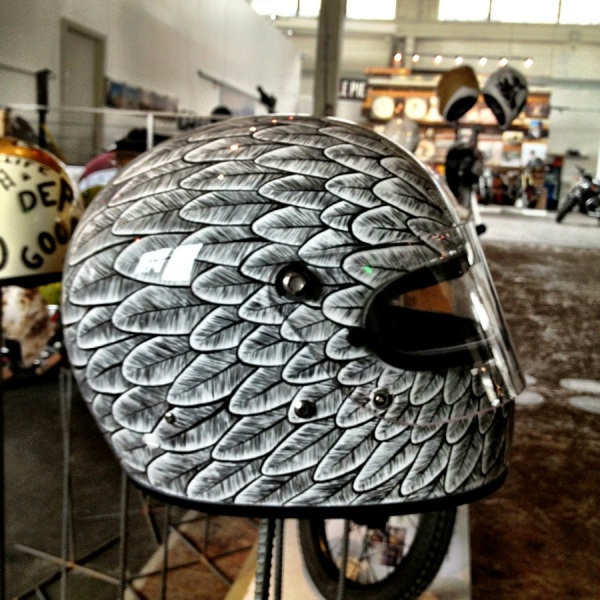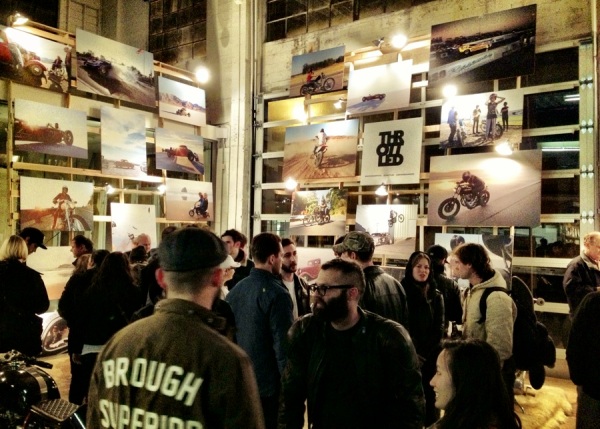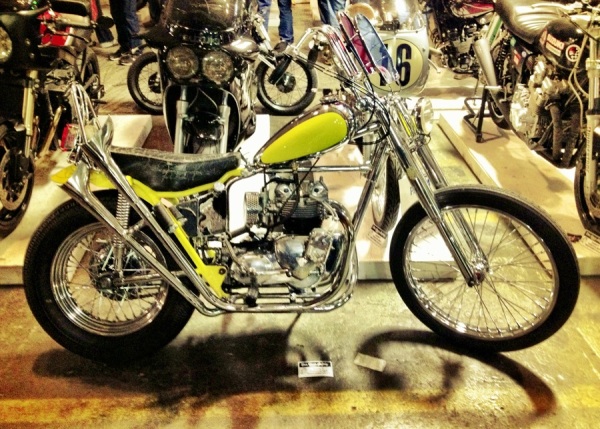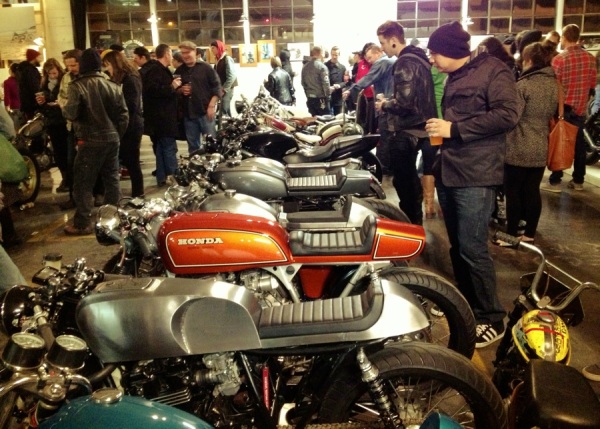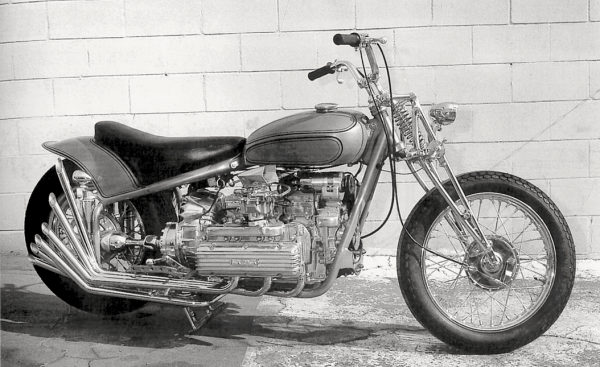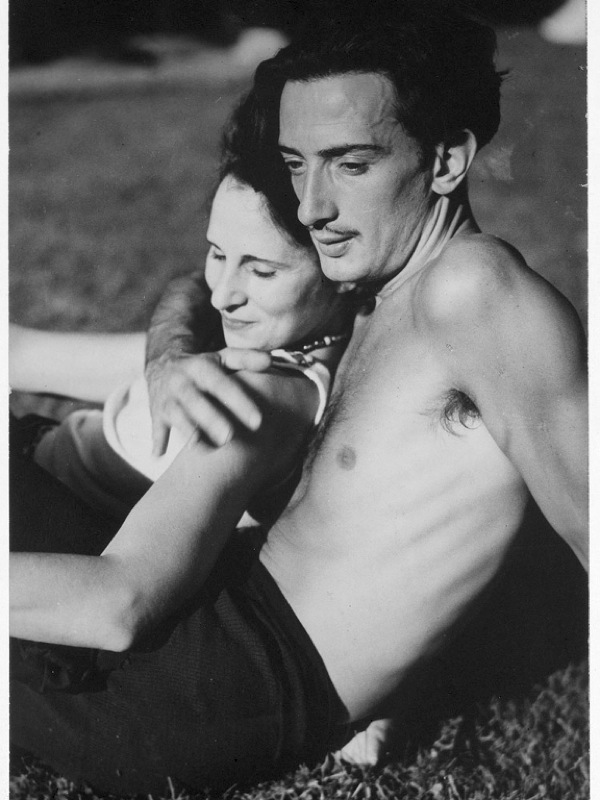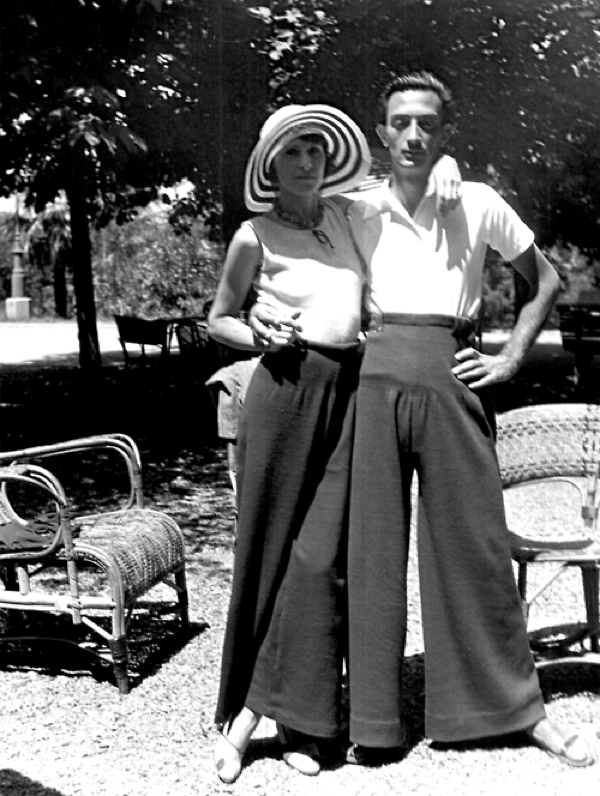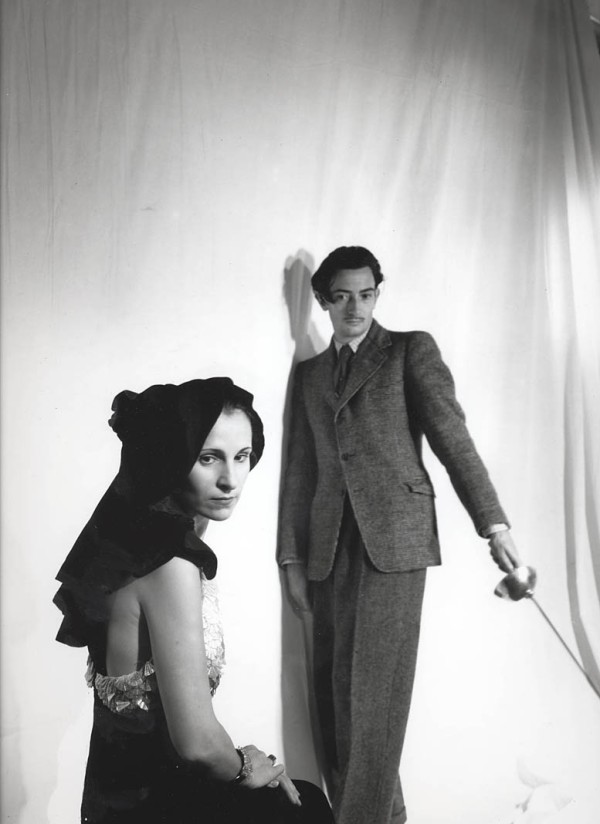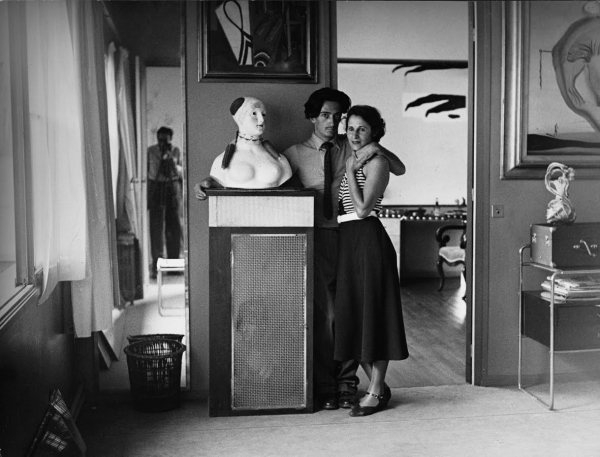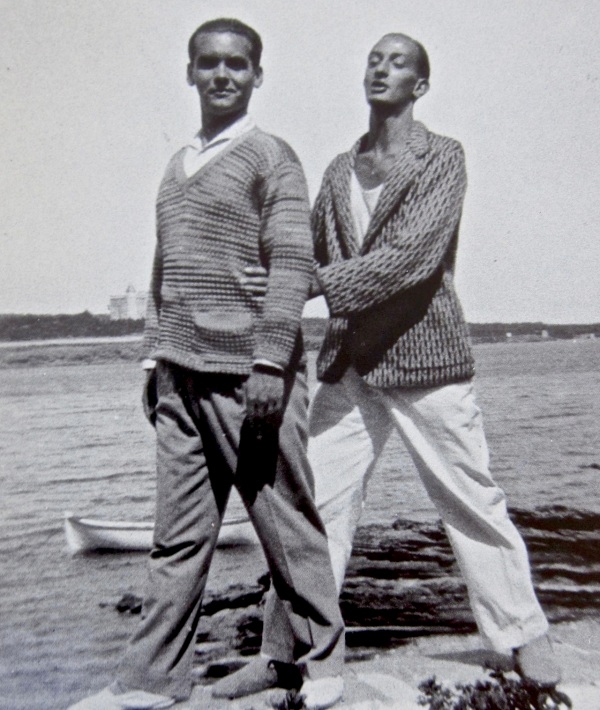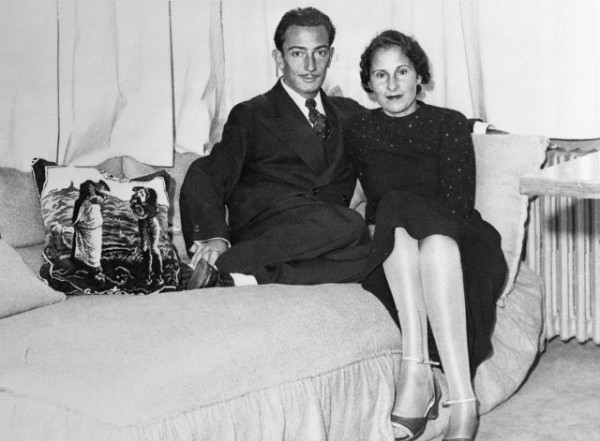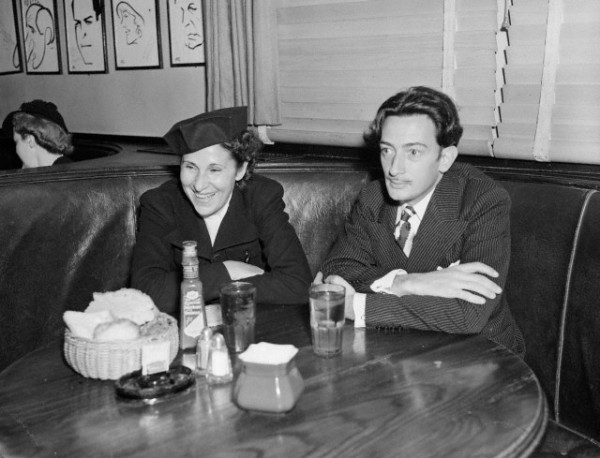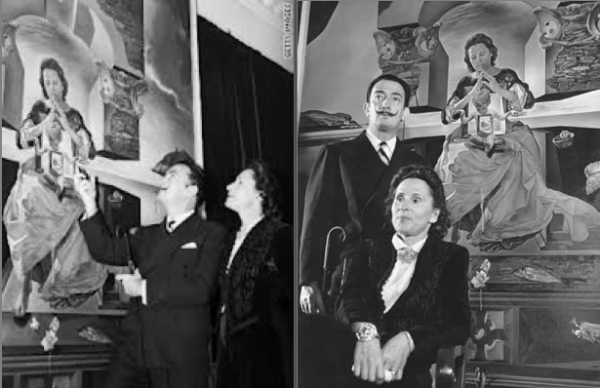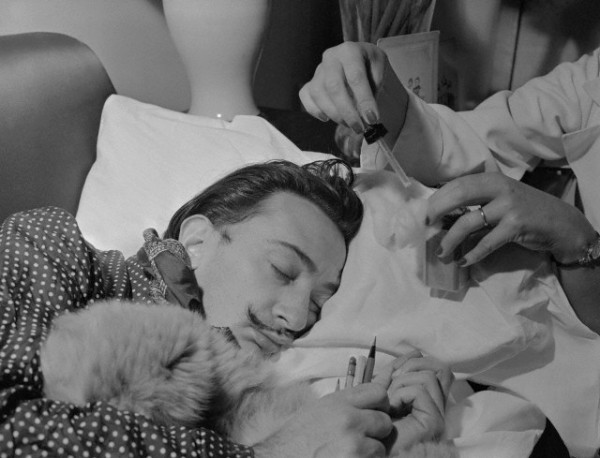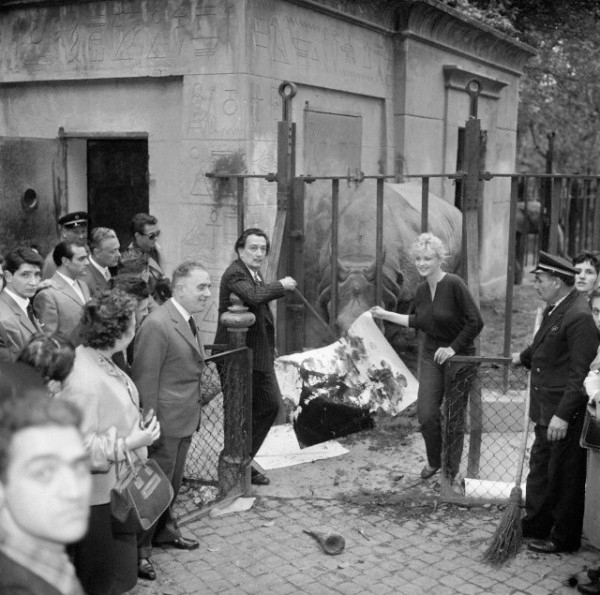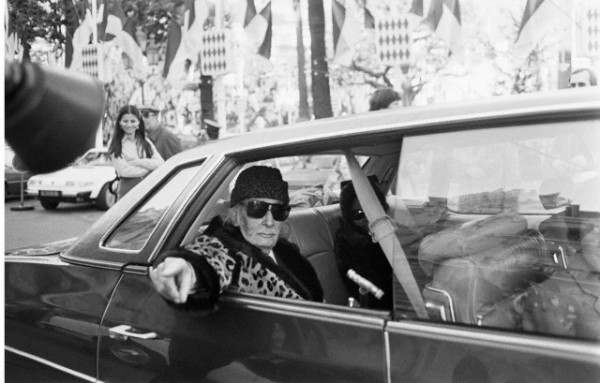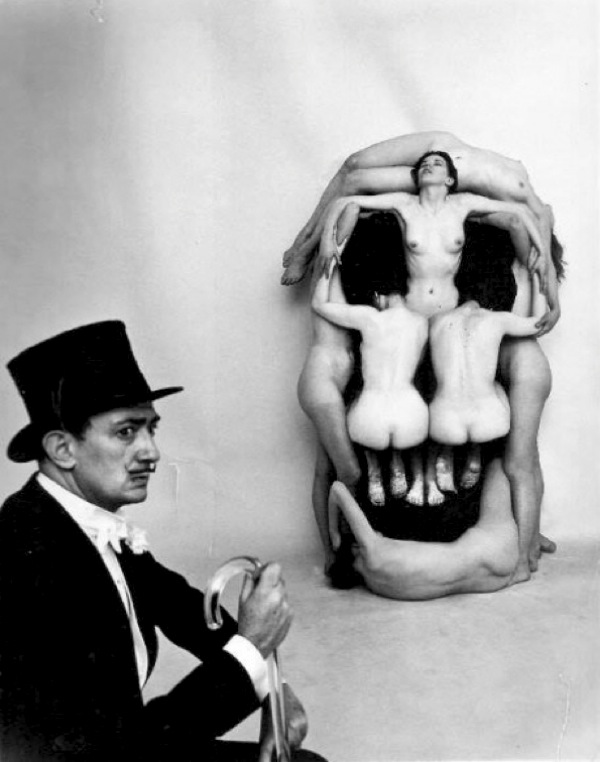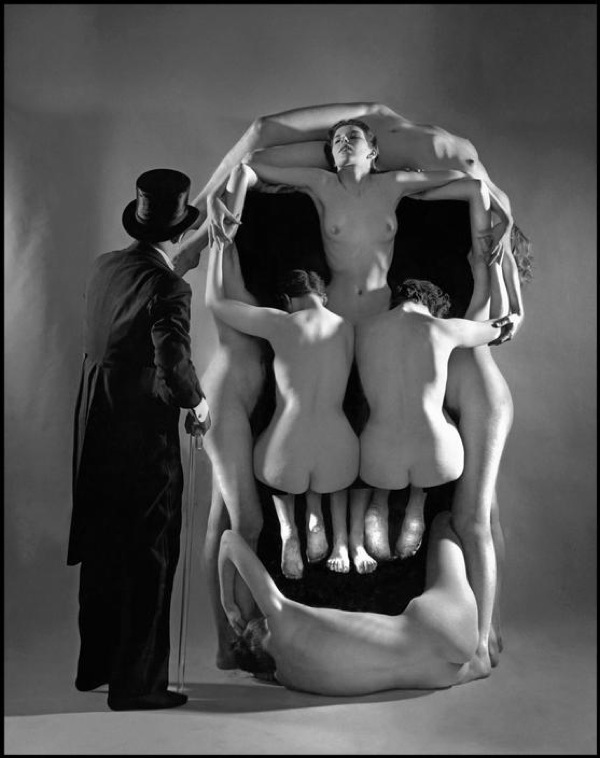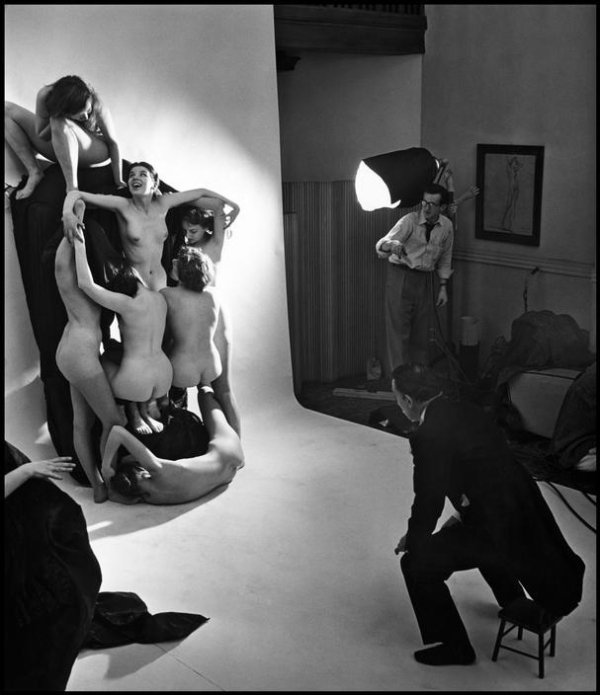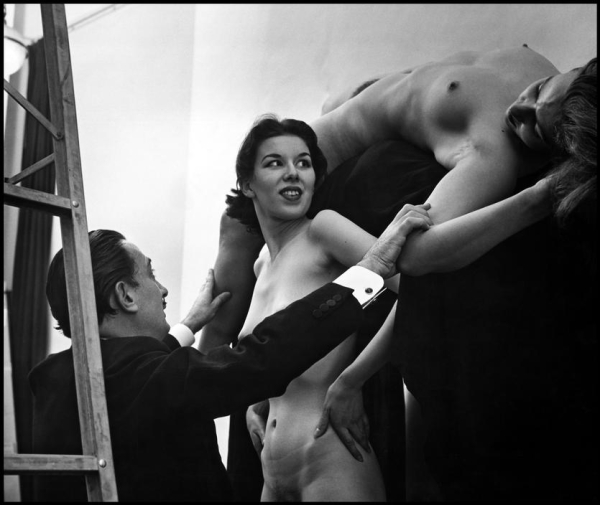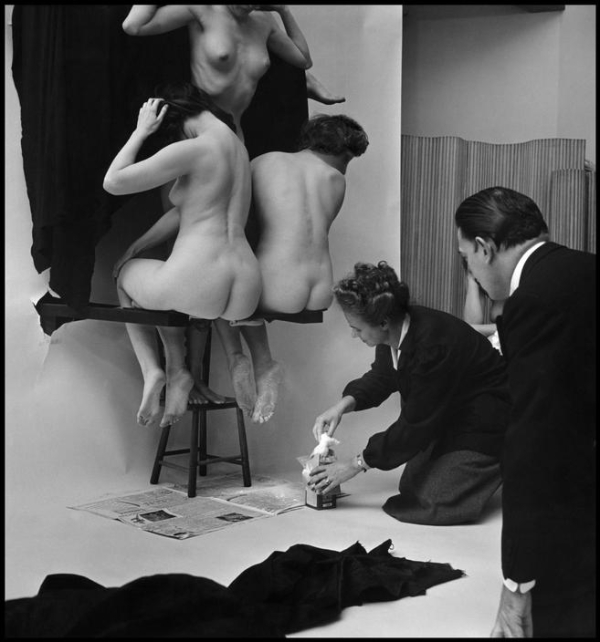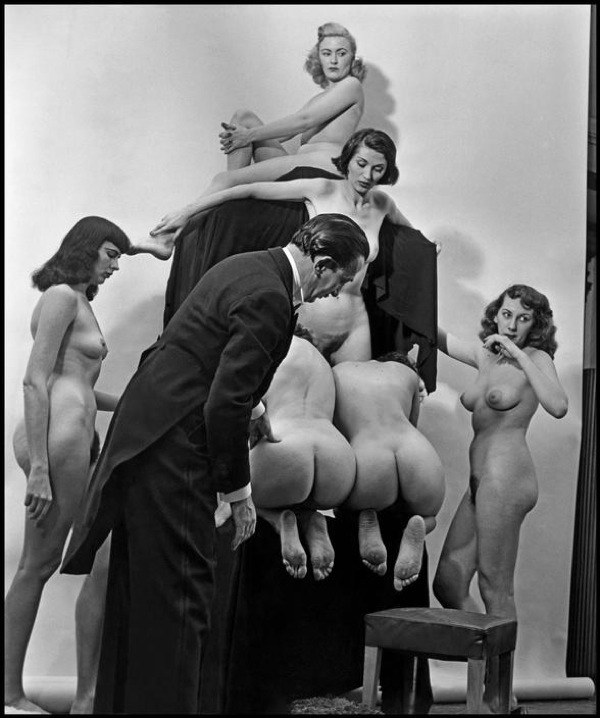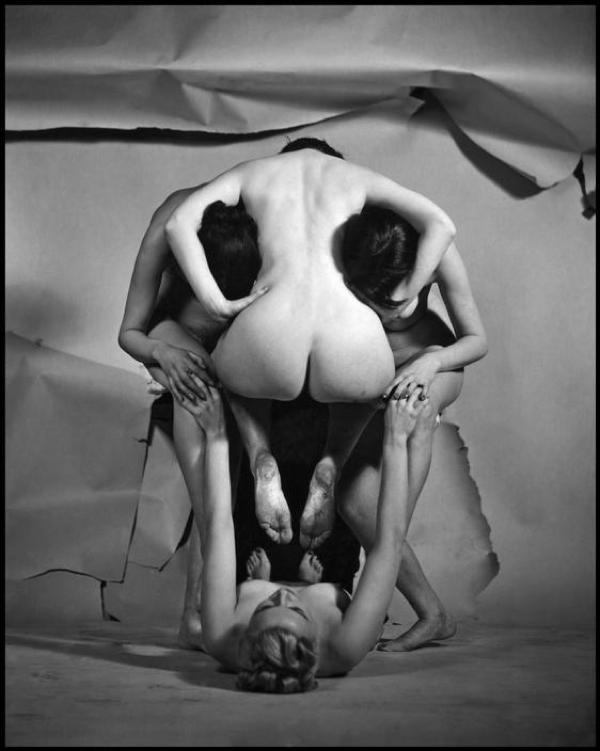-
Funny how often we automatically assume that long-standing, famous couples must be deeply devoted, madly in love, and happier than a couple of pigs in slop. Sometimes, like in the case of Salavador Dali and his wife Gala– what looked like love may have been a case of shared sins and “the devil you know”… I found this juicy tell-all on the couple written for VF some 15 years ago that made my own mustache curl on end… I even had to omit a few bits that were just too much. Let’s just say, it seems that they deserved each other– neither of them seem exactly easy, let alone pleasurable, to be with.
-
![salvador dali gala]()
ca. 1930– Salvador Dali and Gala in Port Lligat, a fishing village near Cadaques, before they married. When they met in 1929 Gala was still married to the poet Paul Eluard, and she quickly began an affair with Dali, who was around ten years her junior. After marrying Dali, she and Eluard continued their intimate relationship. “Letters to Gala” is the published collection of Eluard’s raw, twisted, and emotional letters to Gala that expose the powerful grip she held on him.
-
__________________________________________________________________________
-
DALI’S DEMON BRIDE
When Surrealist master Salvador Dali met Gala Devulina in 1929, the 25-year-old artist found a poisonous muse who defined decadence and outdid him in sexual perversity.
By John Richardson, Vanity Fair, 1998
-
That Salvador Dali fell victim to his Russian wife Gala’s lust for domination is no longer a matter of conjecture. Ian Gibson, in an eye-opening biography of the artist that Norton will publish here this month, comes up with some terrifying new facts, which reveal in more detail and depth than ever before how and why this quintessential Surrealist—the master of the soft watches—allowed himself to be destroyed by one of the nastiest wives a major modern artist ever saddled himself with.
I can testify to the accuracy of Gibson’s account. In the early 1970s I was a vice president of M. Knoedler & Co., Dali’s dealers. One of my responsibilities was keeping the artist to the terms of his contract at a time when his eye was so bleary and his hand so shaky that assistants had taken over his more arduous work. I could not help feeling sorry for the seedy old conjurer, with his rhinoceros-horn wand, leopardskin overcoat, and designer whiskers, not to mention his surreal breath. The Wizard of Was, as someone called him, was all patter and very little sleight of hand. His virago of a wife and the creepy, conniving courtiers in charge of his business had reduced Dali to a mere logo, a signature as flamboyant as his mustache.
-
![gala salvador dali]()
ca. 1930– Salvador Dali and Gala in Port Lligat, a fishing village near Cadaques, before they married. Dali was reportedly a virgin when they met, who feared female private parts, and in a very close relationship with the poet Federico Garcia Lorca. There are differing opinions on whether it was a gay love affair– some say it was, while others claim Dali rebuffed Lorca’s sexual advances. Reports are also that what Dali really got off on was candaulism.
-
Gala’s business methods were very Russian: she did not haggle so much as berate and bully. In a jet-black wig held in place by a Minnie Mouse bow, this ancient harridan would drive home her wheedling demands for money with jabs of ancient elbows and blows of mottled knuckles. After one gruesome dinner at Maxim’s in Paris which left me black and blue, I refused to deal with her ever again.
“Dali need more money.” Jab!
“Then Dali had better start painting again.”
“Dali paint every day. You give more money, he give more paintings.”
“All our money got us last year were bits of paper smeared with ink from an incontinent octopus. Ouch! Gala, that was my kidney!”
To put one of Dali’s biennial shows together, I was obliged to beg, borrow, and improvise: cover nude girls in paint and roll them on sheets of paper; jazz up dud old masters with Dalian trademarks—a swarm of ants or a rotting sardine—thereby transforming them into artifacts that were no less dud but far more valuable. Amazingly, the stuff sold.
-
![Salvador and Gala Dali, 1936 beaton]()
1936– Salvador Dali (holding a fencing foil) and Gala –photograph by Cecil Beaton.
-
Gala is sometimes said to have hailed from one of those Shangri-las where everybody eats only yogurt and lives to be more than a hundred. In fact, she was born Helena Diakanoff Devulina in Kazan in 1894. Her father was a civil servant, her mother a member of the Moscow intelligentsia who wrote children’s stories. According to Dali, Gala was part Jewish; according to her daughter, she was not. As a child, Gala was delicate and had to be packed off periodically to sanatoriums. At one of these, this manic girl excessively pure, yet at the same time the victim of “whorish” (her word) fancies—fell in love with the young French poet Pau Eluard, who would win fame as one of the founders of Surrealism. The outbreak of war separated them, but in 1916, Gala made her way from Moscow to Paris to rejoin her poet lover.
Gala and Eluard were married a year later. Soon, according to Gibson, “her appetite for sex…was so overwhelming that it verged on the nymphomaniac.” She did not allow the birth of a daughter, Cecile, in 1918, to cramp her style. Apart from an unsuccessful attempt in old age to disinherit Cecile, Gala paid her little or no heed. Eluard prided himself on his sexual prowess, but he failed to satisfy Gala, so she took lovers on the side. They had to be exceedingly young, handsome, and horny. Since Gala was blessed with striking, Slavic looks, an appetizing little body, and the libido of an electric eel, she had no difficulty finding them. One of her first lovers was the charismatic German Dadaist Max Ernst, who had recently moved from Cologne to Paris. At Gala’s insistence, Eluard let this hot young genius share their bed. Two men proved much better than one… Few of the other Surrealists could stand Gala. Much as they revered the works of the Marquis de Sade, they felt threatened when an authentically Sadean monster manifested herself in their midst. Amused, she would give a derisive smile; angered, she would roar like a Siberian tiger.
-
![salvador dali gala]()
1932– Salvador Dali and Gala –photograph by BRASSAÏ Gyula Halash
-
In August 1929, the Eluards and a group of friends went to stay in Cadaques, Dali’s hometown. The artist, who had yet to make a name for himself outside Spain, had already heard about Gala’s strange proclivities, but his first sight of her in a bathing suit, on the sacrosanct beach of his childhood, left him bewitched. Gala was the demonic dominatrix of his dreams. For her part, she was in the market for another celebrity husband. And in the 25-year-old Dali she found the man of her dreams, someone who shared her passion for money, power, and notoriety, but also someone whose latest paintings, with their references to Freud and Sade and their meticulous, Vermeer-like finish, were destined to have an instant succes de scandale.
One small problem. Dali had been in love only once before, and that had been with a man: Federico Garcia Lorca. Lorca had exerted a formative influence on Dali’s earliest work and was on the way to becoming Spain’s greatest poet. Hearing that his former lover was involved with a woman, Lorca was incredulous….However, Gala turned out to be unfazed by Dali’s homosexual propensities….
-
![federico garcia lorca salvador dali]()
1927– The poet Federico Garcia Lorca and a young Salvador Dali (storied to be gay lovers) near Dali’s family summer residence in Cadaques, Spain –photograph by Dali’s sister.
-
Dali’s stuffy but dotty Catalan family was appalled by his involvement with this scarlet woman from sinful Paris. Wrongly assuming Gala to be a drug addict who had turned Salvador into a dope peddler, his father disinherited him, and his devoted sister, Anna Maria, embarked on a feud with Gala which would last until death. The following spring, Gala and Dali spent five weeks at Torremolinos—in those days an unspoiled fishing village—and scandalized the local women, who still wore black and kept themselves covered, by wandering around the streets tanned mahogany from sunbathing nude on the beach, caressing each other exhibitionistically. She would be bare-breasted and miniskirted, her ratlike eyes ablaze; he, bone-thin and no less manic-looking, his bare chest set off by a necklace of bits of broken green glass. In nearby Malaga, a friend in the tourist office tried to explain this bizarre couple away as Egyptians, which only made things worse, leaving them at the mercy of beggars crying for baksheesh.
Dali was a latecomer to Surrealism. An earlier generation of Surrealist painters—Max Ernst, Joan Miro, Andre Masson, Yves Tanguy—had paved the way for him, as had the Surrealist poets, above all Andre Breton, a control freak of genius who headed the movement. Surrealism turned out to be made for Dali, as he was made for it: “the painter of dreams about whom [the Surrealists] had long dreamt,” as the photographer Brassai said. The twisted imagery churned up by Dali’s dysfunctional psyche corresponded to the sort of iconography that Breton had envisaged for his movement. Thanks to Breton, the artist’s first one-man show in Paris, in November 1929, would be a sensation. This plus Un Chien Andalou and L’Age d’Or, the two subversive films Dali made with the friend of his youth, Luis Bufiuel, confirmed him as the last great star of Surrealism. No doubt about it, by coming into his life just as his career was taking off, Gala likewise helped to make Dali, just as in less than a decade she would play an active role in unmaking him.
-
![Salvador Dali and Gala Eluard in Dali's Studio]()
1934, France — Salvador Dali and Gala in Dali’s Paris studio in 1934, the year they were married in a civil ceremony. She was previously married to poet Paul Eluard. In 1958, Salvador and Gala remarried in a Catholic ceremony in Montrejic after being granted a special dispensation by the Pope. — Image by © Bettmann/Corbis
-
After their marriage in 1934, Dali set about propagating the legend of Gala as his muse and collaborator. She also served as his business manager and publicist, and in no time succeeded in turning him into as much of a monster of hype and megalomania as she was. Inevitably she came up against Andre Breton, who loathed her as much as she loathed him. Inevitably she found herself fighting Breton for possession of her husband’s soul, and inevitably she won. Her victory condemned Dali to a career of repetitious hackwork-society portraits, Fifth Avenue window displays, hosiery promotions—which was instrumental in bringing not just him but the Surrealist movement into artistic and intellectual disrepute. With her White Russian terror of Communism, Gala also managed to subvert the liberal ideology that Dali had shared with the fellow geniuses of his student days, Lorca and Bufiuel. Disdaining the Marxism of the other Surrealists, the former atheist and anarchist went over to totalitarianism and its by-product anti- Semitism. Far from showing any sympathy for the proletariat, Dali reportedly announced, apropos of his surreal penchant for the macabre, that he preferred train accidents in which the third-class passengers suffered most. He hailed the swastika as “the fusion of Left and Right, the resolution of antagonistic movements.” On another occasion he described Hitler, childishly, as a nurse, and also talked with relish of biting “into the doting and triumphal sweetness of the plump, atavistic, tender, militarist and territorial back of [this] nurse.”
When Franco prevailed in the Spanish Civil War, Dali set about currying favor with the Caudillo by publicly recanting his former contempt for family values and the church. Breton, the most powerful force in French letters, anathematized the artist as a counterrevolutionary and expelled him from the Surrealist group. He also came up with a brilliant anagram for him, “Avida Dollars.” Dali’s period of greatness had lasted little more than 10 years. His “last scandal,” he promised, would be a return to classicism, but he no longer had the skill, the time, or the patience for it. Dali’s “classicism” turned out to be academic kitsch. Thanks to Gala, the rest of his life would be an ever accelerating degringolade.
-
![Salvador and Gala Dali at Restaurant]()
Feb 1937, Los Angeles, CA — a young 22-year-old Salvador Dali and Gala at Hollywood’s Brown Derby restaurant. — Image by © Bettmann/Corbis
-
The Dalis spent World War II in New York. Although Gala hated the city, she made a fortune out of her husband’s sales-oriented shock tactics and his flashy commissioned portraits of the hard-faced doyennes of cafe society in ball dresses, posed against desert-island backdrops. These daubs effectively scuttled his reputation as an avant-garde artist. Away from his Catalan roots, Dali’s imagination atrophied and his work became slick and cheap. Only his paintings of Gala have any intensity. In 1948, back in his Surreal folly at Port Lligat, a fishing village not far from the parental house in Cadaques, Dali gave bombastic interviews contrived to ingratiate himself with the church. And to the same end he embarked on the first of a series of utterly unconvincing devotional paintings: a sanctimonious image of Gala, entitled The Madonna of Port Lligat. The fishermen of Port Lligat, who loved Dali but loathed Gala—she was always propositioning them—found the notion of her as the Madonna an absurdist joke. Nevertheless, the painting proved a useful prop when the Dalis had an audience with the Pope in November 1949. His Holiness admired it. On the other hand, friends of the artist’s youth, who remembered the fanatical intensity of his attacks on religion, were nauseated by his hypocrisy.
For them the seal of papal approval was tantamount to the mark of the beast. By the early 1960s, Dali had to work even harder on ever more degrading projects to support Gala’s addiction to gambling and boy toys. One hustler arranged for friends of his to steal her car while he was dating her. Less of a menace was a handsome, 22-year-old junkie named William Rotlein, whom Gala had picked up on a New York street. She bought him new clothes, weaned him off drugs, and took him to Spain, then Italy, where she made him swear eternal love to her on the tomb of Romeo and Juliet. Except for Eluard, Rotlein was the best sex she had ever had, Gala boasted. He even returned her love, which is probably why the affair lasted four years. It ended when Rotlein failed a screen test for a walk-on part in a Fellini movie. Gala despised failure and gave him a one-way ticket back to New York. Shortly afterward, he died of an overdose.
-
![the madonna of port lligat]()
Salvador Dali and Gala pose with the ironic and controversial “The Madonna of Port Lligat” which portray the anything but pure and holy Gala in a religious-themed devotional painting which Dali used as a tool to please the Pope, who was said to have admired it.
-
To entertain her lovers, Gala obliged Dali to give her a castle, part hideaway, part love nest. Called Pubol, it was 50 miles from Port Lligat. The artist was not allowed to set foot there unless he had a written invitation from the chatelaine. Thanks to Jean-Claude Du Barry—a young man who ran a Barcelona modeling agency, and whom Dali described as “my purveyor of a**”—the artist and his wife had a constant supply of fresh boys… Woe betide them if they went after Dali’s girls, chicks with… When Gala was almost 80, she fell for a young student from Aix-en-Provence, who gave her the illusion of eternal youth. After a year or two, he was displaced by Jeff Fenholt, the long-haired star of Jesus Christ Superstar. Fenholt was given a recording studio at Pubol. There he spent night after night rocking away, to the intense irritation of Gala, who wanted him in her bed, as well as of the other guests, who wanted to sleep. Fenholt proved a very expensive item. He persuaded Gala to give him a sizable house on Long Island and send him large sums of money (“Must have $38,000 or will die,” read one telegram). According to Gibson, Fenholt showed Gala little or no gratitude. His impersonation of Jesus had not engendered any redeeming qualities; however, the role came in useful later on, when he switched to being a TV evangelist in California. Dali was said to be outraged at the expenditure and at the degree of Gala’s infatuation, which would last almost until she died. In 1981 the worm finally turned. Dali beat up his 87- year-old wife so badly that she had to be taken to the hospital with two broken ribs.
Gala had become more and more piratical. She preferred payments to be made in cash; that way she could smuggle large sums in or out of Spain, Switzerland, and France. So full of banknotes were the Dalis’ safe-deposit boxes at their Paris hotel that the manager begged them to move the contents to a bank. To the couple’s dismay, much of the currency had become obsolete. The artist then turned the management of his affairs over to a succession of secretaries. He was too stingy to pay them, so they had to make do with commissions, which resulted in their becoming multimillionaires at his expense.
-
![Salvador Dali Sleeping with Perfumed Pillow]()
1942, New York– Original caption: And it’s off to work goes Salvador Dali. His method of going to work is not that of the ordinary mortal. He lies on a perfumed couch in his studio with a handful of pencils. Perfume is then dropped on his eyelids to influence the character of his dreams, for dreams are the stuff of which surrealism is made. –Image by © Bettmann/Corbis
-
The first of the secretaries was a genial Irishman, Captain Peter Moore, who relieved Dali’s, or rather Gala’s, constant need for ready money by suggesting that they charge $10 each for Dali’s signature on blank sheets of paper onto which publishers or dealers could print whatever image they liked from the artist’s repertory. Since Dali could do a thousand signatures an hour, he relished this task. It was like printing his own money. After French customs stopped a shipment of 40,000 of these signed sheets to a so-called art publisher, respectable dealers shied away from Dali’s late graphic work. Once again he had done himself in.
Gala made no bones about the people who trafficked in these sheets of paper. “They are all crooks,” she said. “Who cares? They pay us cash, so what difference does it make? Dali painted the work. He can sell the rights to anyone he wishes and as many times as he wants.” It was not even as if Dali needed money: in 1974 he was worth $32 million. What little was left of his integrity as an artist was sacrificed to Gala’s nymphomania and greed for tacky aggrandizement.
-
![Salvador Dali Sketching]()
1942, New York– Gala gets Dali in the mood for work. Using long wands, she presses perfumed cotton swabs on his eyes to irritate the retinas. This hypnological practice ws supposed to stimulate his imagination and induce visions. The treatment is beginning to work, apparently, for Senor Dali has now begun to sketch while the perfumed pads continue the compression of his eyeballs. –Image by © Bettmann/Corbis
-
After the friendly, businesslike Peter Moore was squeezed out in 1974, things got much worse. Gala insisted on replacing him with a former Catalan soccer player named Enric Sabater, a jerk-of-all-trades with a flair for public relations and monkey business. When he went to work for Dali, Sabater applied for a private detective’s license and took to carrying a gun. He set up a number of offshore companies and proceeded to build up a business empire for himself, which eclipsed the artist’s. According to Gibson, to keep the Dalis isolated from other advisers, Sabater tapped their telephones and ordered armed guards to stop anyone from entering their house unless authorized by him. By charging around with a revolver in his belt, eavesdropping and spying, Sabater reduced Dali to a “trembling mass of jelly.” Reynolds Morse, a collector of the artist’s work and a friend, claims Sabater had worked “the greatest con game ever on the greatest con man in art.” Besides a yacht and two luxurious residences on the Costa Brava, one with a lobster pond, Sabater amassed in five years a fortune of more than a billion pesetas (about $14 million). Meanwhile, Gala’s passion for Fenholt had left Dali in a state of abject depression. Was she going to leave him for Jesus Christ? To alleviate his panic, Gala gave him excessive doses of Valium and other sedatives, which made him lethargic. She would then dose him with “unknown quantities of one or more types of amphetamine,” thereby causing him “irreversible neural damage.” “Might it be possible,” Gibson asks the reader, “that Gala, in plying Dali with a mixture of pills from her private medicine chest, was…attempting to poison him? It is a possibility that cannot be entirely ruled out.” It was clear, in any case, that Gala’s treatment had reduced the artist to a bag of quivering bones. When the King and Queen of Spain visited him in 1981, he looked very battered: Gala was rumored to have made a dent in his skull with her shoe.
Ironically, it was Gala who died first, on June 10, 1982, aged 87. The fact that this occurred in a Barcelona hospital made for problems. She had wanted to die and be buried at Pubol. To avoid legal complications, Dali’s entourage decided that her body should be propped up, with a nurse beside it as if she were still alive, in the back of her huge old Cadillac and driven to Pubol. Doctors were brought from Barcelona to embalm her. She was then buried, wearing a favorite red Dior dress, in a tomb in the castle’s crypt. There, a few nights later, Dali was found on his knees, convulsed with terror. Although he had come to despise Gala, he could barely function without her. AccordingIy, he stayed on at Pubol. One of his nurses described him sobbing constantly and spending, in Gibson’s words, “hours making animal noises. He had hallucinations and thought he was a snail.”
-
![Salvador Dali Painting on Site with Observers]()
1959, Rome, Italy– Original caption: A crowd of onlookers watch Salvador Dali finishing his rhinoceros-inspired painting. A bottle of Indian ink poured by Dali over the animal’s footprints on the paper produced the “work” he is here shown displaying. Screen actress Isabelle Corey is helping Dali in his show. –Image by © Bettmann/Corbis
-
After Gala’s death, Dali’s affairs went from bad to terrible. The new secretary, a seemingly harmless French photographer and self-proclaimed Dali expert named Robert Descharnes, turned out, according to Gibson, to be every bit as untrustworthy as his predecessor. Since Dali could not bear to return to the Port Lligat house, Descharnes temporarily moved his family into it, and nosy neighbors reported that he proceeded to ship the more valuable contents—archives, drawings, objects—to Paris. Descharnes’s credentials as an expert did not survive the publication of a book in which he claimed that Dali, despite the uncontrollable trembling of his right hand (so bad that he took to signing things with a thumbprint), had managed to execute a hundred paintings, unlike any he had done before, in 1982 and 1983. Gibson’s thorough research has revealed that a great many of these works are by someone named Isidor Bea.
For the last five years of Dali’s life, he was an invalid—an invalid from hell. He screamed and spat at his nurses and lunged at their faces with his nails. To annoy them he would soil his bed. He would take a pill only if an attendant would promise to share it or take one too. His incessant use of an antiquated bell push attached to his pajamas very nearly caused his death when it triggered a short circuit, which set fire to the bed. A nurse found him semi-conscious on the floor and summoned help. Despite Dali’s calling her “Bitch! Criminal! Assassin!,” the nurse managed to give him mouth-to-mouth respiration, which helped save him. While Dali was in the bum clinic, his sister, Anna Maria, once closer to him than anybody else, insisted on visiting him. “Go away, you old *****,” he supposedly shouted, and tried to hit her. A few weeks later he confirmed his intention to disinherit her. He was evidently on the mend.
-
![Spanish Artist and Painter Salvador Dali]()
1980– The eccentric Spanish artist and painter Salvador Dali with his longtime wife Gala in Monaco. –Image by © René Maestri/Sygma/Corbis
-
Not wanting to return to Pubol, Dali decided to move into an extension of the Theater-Museum which he had founded in the nearby town of Figueres. And there, except for spells in the hospital, he remained, “swathed in secrecy,” until his death. Because he refused to eat, doctors had “equipped him with a grotesque nasal-gastric tube leading directly to his stomach. The piece of apparatus made his speech even more incoherent and his throat painfully dry.”
In November 1988, Dali was readmitted to the hospital. Hearing that the King of Spain was in Barcelona, he requested and received a visit, which involved dusting off the famous mustache. Death came two months later, on January 23, 1989. To the surprise of most of his entourage, the artist was not buried beside Gala at Pubol, but in his Theater-Museum. He had once assured me that he was going to have his body refrigerated in the hope of resurrection. However, he ended up, like Gala, embalmed, pacemaker and all. He had also insisted that his face be covered in death, but at the funeral he was laid out in an open coffin for all to see, his grubby nails showing through his shroud.
___________________________________________________________________________
-
“In Voluptas Mors” by Salvador Dali & Philippe Halsman, which you may recognize from the movie poster for “The Silence of the Lambs”– used to symbolize the seven victims in Jonathan Demme’s classic film…
-
![salvador dali women skull]()
1951– Nude women posed by Dali forming a skull entitled “In Voluptas Mors” –photograph by Philippe Halsman (in collaboration with Salvador Dali)
-
![In Voluptas Mors Dali]()
1951– Salvador Dali posing naked female models to form a human skull entitled “In Voluptas Mors” –photograph by Philippe Halsman (in collaboration with Dali)
-
![women skull dali]()
1951– Salvador Dali posing naked female models to form a human skull entitled “In Voluptas Mors” –photograph by Philippe Halsman (in collaboration with Dali)
-
![women naked skull dali]()
1951– Salvador Dali posing naked female models to form a human skull entitled “In Voluptas Mors” –photograph by Philippe Halsman (in collaboration with Dali)
-
![women naked skull salvador dali]()
1951– Salvador Dali posing naked female models to form a human skull entitled “In Voluptas Mors” –photograph by Philippe Halsman (in collaboration with Dali)
-
![women naked dali skull]()
1951– Salvador Dali posing naked female models to form a human skull entitled “In Voluptas Mors” –photograph by Philippe Halsman (in collaboration with Dali)
-
![women forming skull dali]()
1951– Salvador Dali posing naked female models to form a human skull entitled “In Voluptas Mors” –photograph by Philippe Halsman (in collaboration with Dali)
-
![naked women skull dli]()
1951– naked female models posed by artist Salvador Dali to form the likeness of a human skull. –photograph by Philippe Halsman (in collaboration with Dali)
-
![img7]()
photographer Philippe Halsman, who collaborated with Salvador Dali on “In Voluptas Mors” in 1951
-
![]()
![]()

















































